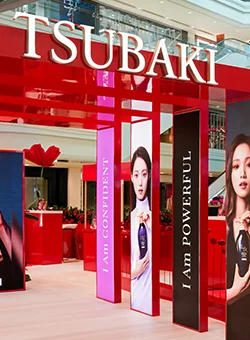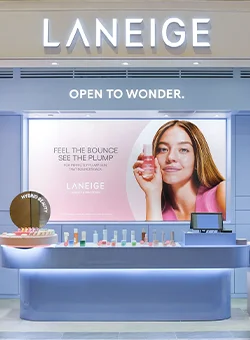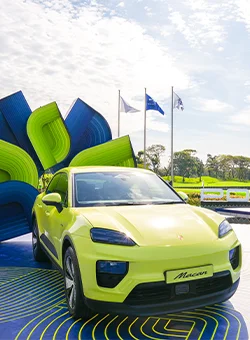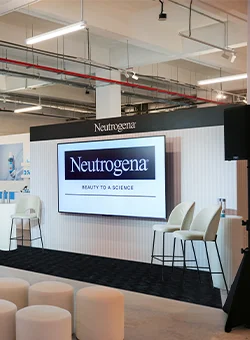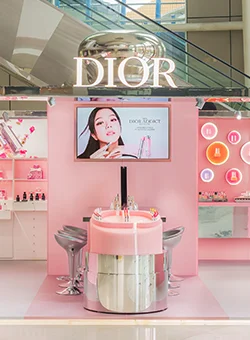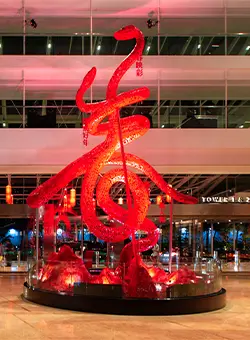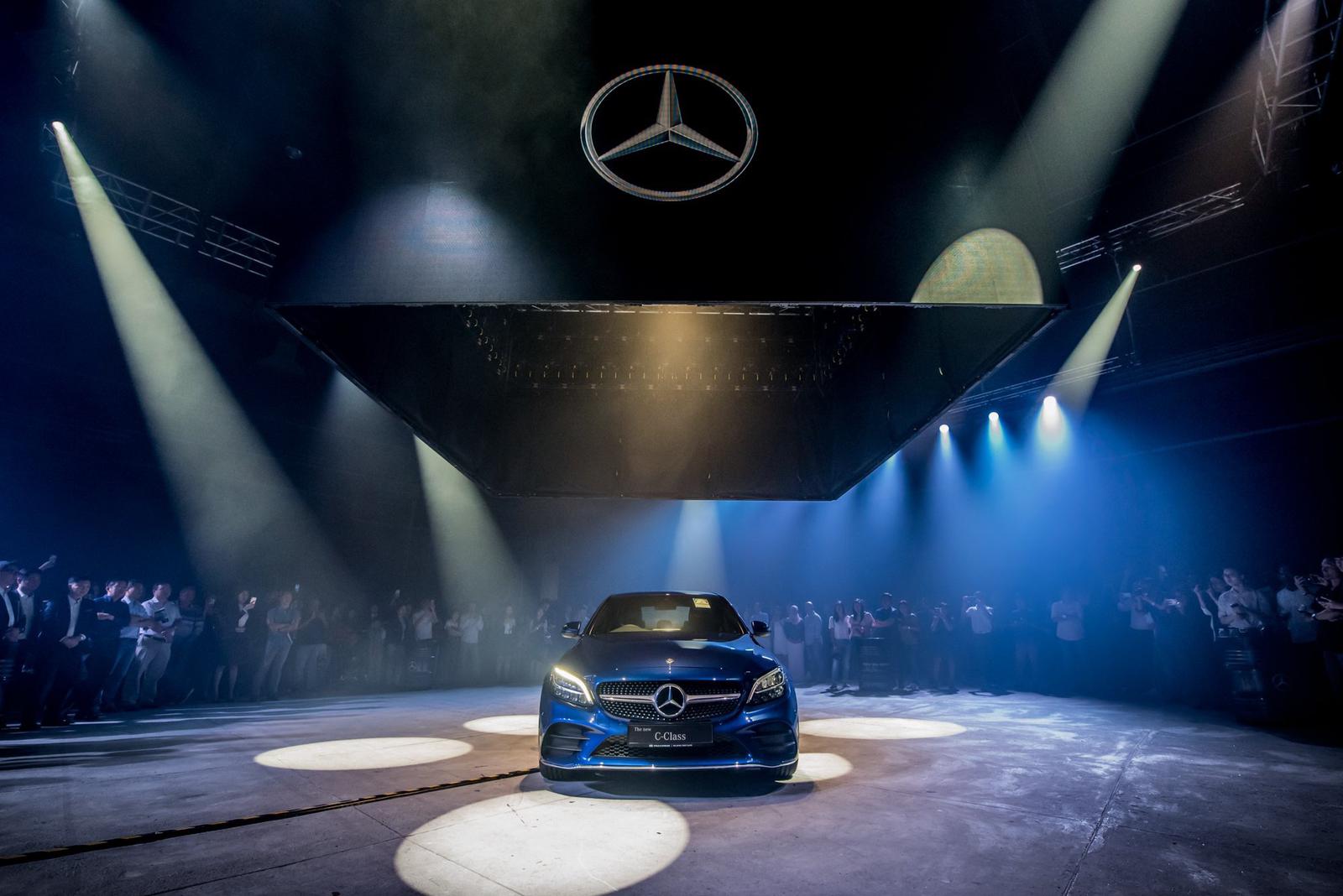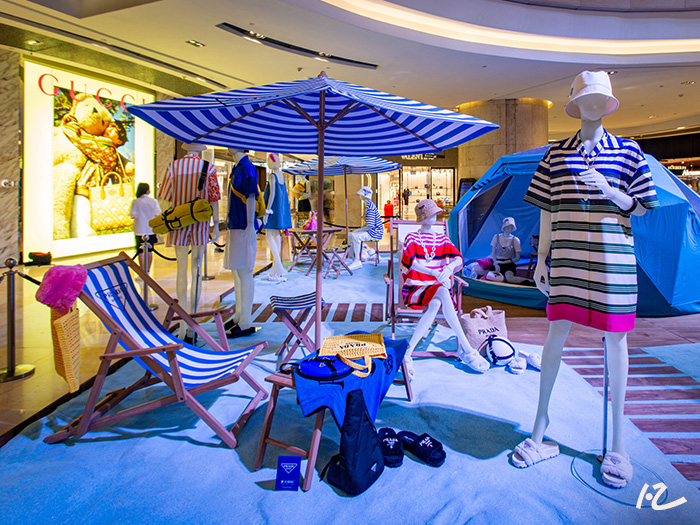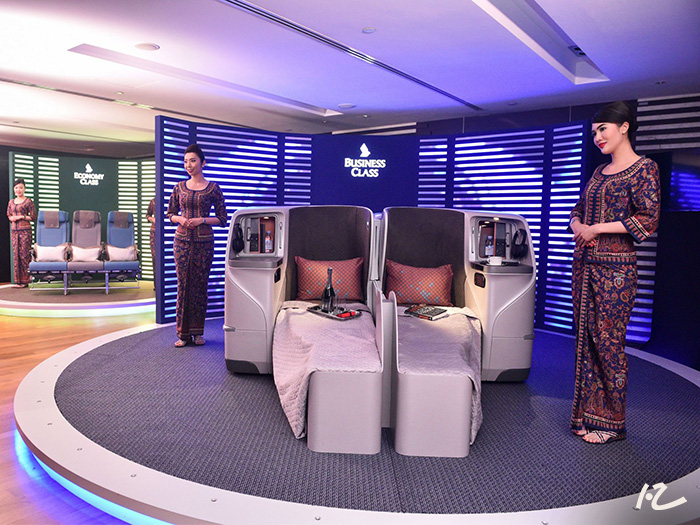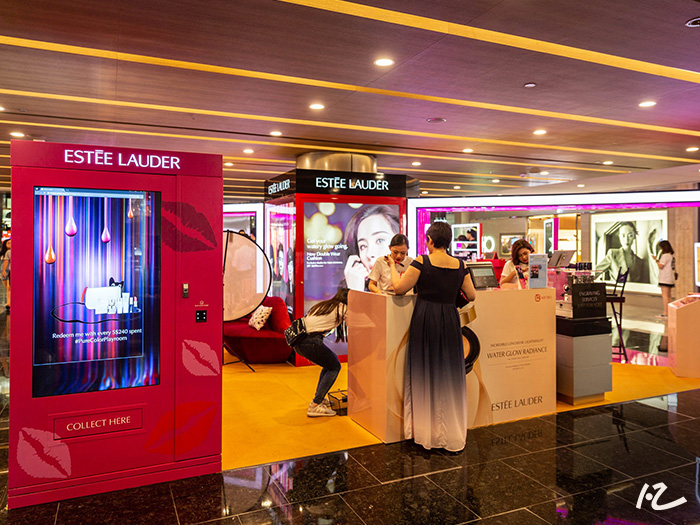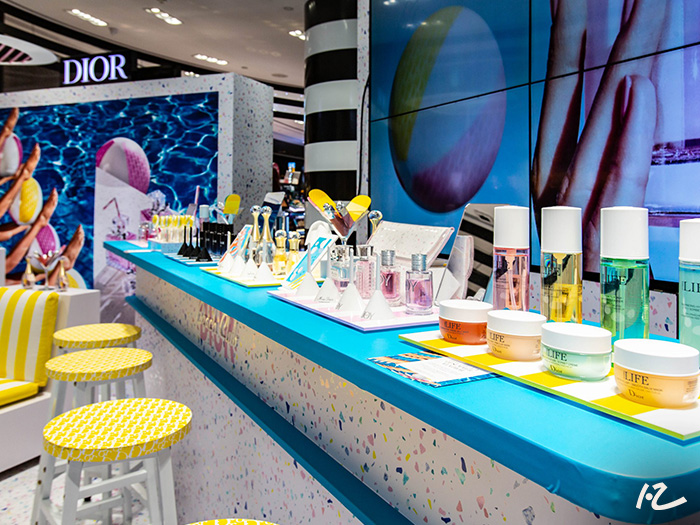At the heart of every good marketing strategy lies impeccable branding that employs the values, persona and identity of the brand and helps it rise above the competitive market. All these key facets come together to build a story that resonates with people, raises the awareness of the brand and helps to form a more personal connection with your target audience. So what exactly is the best way to build this relationship? This article aims to cover all you need to know about brand activation strategy, the different types of experiential marketing, and the approaches for creating a successful brand activation experience.
What is a Brand Activation Strategy?
Brand activation strategy helps to connect with your customers directly, foster brand engagement and purchase decisions. Usually held in conjunction with a new product launch, showcase of a limited-edition collection or as a part of a rebranding initiative, it aims to increase your brand’s presence and engage customers on a personal level. Bringing your audience through an engaging and memorable brand activation experience gives them a chance to understand your brand better and foster meaningful relationships, building customer loyalty in the process.
Experiential marketing events have been statistically shown to bring colossal growth in engagement rates and brand loyalty, directly increasing brand awareness and profit sales. 91% of consumers reported that they would be more inclined to purchase the brand’s product or service after participating in a brand activation or experience, and 40% felt they became more loyal to the brand.
Prada ‘Outdoor – Coast’ Pop-Up is one of the successful examples of a brand activation campaign, designed and fabricated by Dezign Format. By bringing the themed display and products outside of its conventional retail store space, shoppers were offered a refreshing and engaging experience. Creative presentation of the brand’s collection complemented the launch of clothes and accessories, capturing the mood of summer days at the beach while being indoors.
The Importance of Brand Activation
While traditional marketing focuses solely on the product and its features, brand activation campaigns are aimed to foster a genuine relationship between the brand and the consumer. A successful event includes a detailed study of a target audience accompanied by a selection of immersive experiences that encourage shoppers to engage with a brand. Launching a successful brand activation campaign leads to a memorable experience and a better understanding of brand’s value – both of which are a substantial part of every marketing strategy today.
Interactive content is particularly effective when it comes to younger millennials and Gen Zs. Time and time again, research has shown that Gen Zs place a higher value on brand authenticity when it comes to products and services. Young consumers are no longer solely interested in just products but place a higher importance and regard with its story, the values it upholds and represents.
As a leading events management & design and build company in Singapore with an extensive experience in marketing and experiential campaigns, the team at Dezign Format has the key expertise in brand activation and event planning strategy. From conceptualisation to building, fabrication and project management, we are a conclusive end-to-end agency that curates brand activation solutions and events.
Key Approaches to a Successful Brand Activation Event
When it comes to planning a brand activation experience, there really is no answer that fits for all brands. It’s a delicate mix of different components such as your brand story, desired brand positioning, target audience and their preferences. Here are some different approaches your brand can adapt when designing a brand activation event.
Experiential Marketing for Genuine Brand Engagement
There are three key points to consider before leaping into the world of brand activations and experiential marketing campaigns. The first is understanding your customers’ standpoint on products, the second is knowing your brand story well, and the third is finding the elusive sweet spot where both of the first two points meet.
Experiential marketing revolves around branded engagement and authenticity because they build memories with your consumers, instead of flashy gimmicks that may fade away in time.
Dezign Format partnered with Singapore Airlines to launch an experiential marketing experience for their Boeing 787-10 Dreamliner, recreating a true-to-life remodel of the in-flight cabin with actual seats from the aircraft. Aiming to provide an unforgettable brand experience for passengers both old and new, the brand activation allowed guests to experience all the iconic airline has to offer, from the seats, to the food served as well as the inflight entertainment programmes.
Sampling Campaigns to Elevate Experiences
Sampling campaigns are a type of a brand activation strategy that brings customers up-close and personal with a chance to get acquainted with products and services. Highly effective, it creates an incomparable positive reinforcement of your brand within the customers, for they manage to experience first-hand what your brand has to offer. The crucial determining factor of a sampling campaign is identifying your target audience and knowing where and when to reach them.
Sampling campaigns go far beyond just handing out products to interested passersby on the street. The interaction between consumer and brand needs to be an authentic brand moment, such as Estée Lauder’s sampling campaign where make-up artists offered personalised makeovers to customers. While waiting for make-up masterclasses to begin, the participants could try their luck at an interactive gift vending machine that gave them a chance to win unique Estée Lauder gift products.
In-Store Experiences to Draw Audiences In
In-store events are a great brand activation strategy that brings audiences into your space, offering an interactive realm where shoppers can experience your products or services by touch. Reimagined fresh ideas can often bring about high revenue sales, which can be tracked by establishing goals, measuring foot traffic, as well as evaluating competing promotions.
Inspired by the fun and sun-soaked beachside days, The Dior Beach Club Summer Pop-Up @ Sephora ION Orchard featured some of the brand’s summer-ready essentials, including dazzling powders, long-lasting lip tints and perfumes.
As part of the brand activation strategy, the store was furnished in complementary colours to portray the atmosphere of a summer beach party with an uplifting mood in an enclosed store set-up. While the enticing display and product presentation caught the attention of the public, it was vital to create an inviting themed environment with different touchpoints to encourage shoppers to post snippets about the event on their social media channels.
Promotional Marketing to Enhance Brand Visibility
Promotional marketing forms the bedrock of a successful brand activation event. By strategically showcasing your products or services, you not only enhance brand visibility but also create a compelling narrative that resonates with your target audience.
Elevate your promotional efforts by incorporating interactive elements. From product demonstrations to engaging activities, these experiences foster a deeper connection between your brand and your audience, ensuring a memorable and impactful event.
Pop-Up Stores for Creating Temporary Marvels
A pop-up store is not just a temporary space; it’s an immersive environment that brings your brand to life. Transforming a physical location into a captivating experience, a pop-up store allows you to showcase your products in a unique way.
The limited nature of a pop-up store adds an element of exclusivity. By creating a sense of urgency, you encourage consumers to actively participate in the event, fostering a heightened interest and engagement with your brand.
Take advantage of the temporary setup to design interactive and innovative product displays within your pop-up store interior design. This not only enhances the overall experience but also provides a hands-on opportunity for consumers to engage with your offerings, creating a positive association with your brand.
Step-By-Step Guide to Kickstart and Plan a Successful Brand Activation Event
Embarking on a brand activation journey requires meticulous planning and strategic execution. To ensure your event captivates, engages, and leaves a lasting impression, follow this step-by-step guide crafted to guide you towards a successful brand activation event.
Step 1: Define Your Objectives
Clearly outline the objectives of your brand activation event. Whether it is increasing brand awareness, driving product engagement, or fostering customer loyalty, having a defined purpose will guide your planning process.
Step 2: Know Your Audience
Understand your target audience and identify their preferences, behaviours, and aspirations to tailor your brand activation event in a way that resonates with them on a personal level.
Step 3: Choose the Right Venue
Select a venue that aligns with your brand and caters to your target audience. Whether it is a high-traffic area, a unique space, or a destination with a specific ambience, ensure it complements the experience you want to create.
Step 4: Craft a Compelling Theme
Develop a theme that ties seamlessly into your brand and resonates with your audience. A compelling theme creates a cohesive narrative that enhances the overall impact of your brand activation event.
Step 5: Design Engaging Activations
Plan and implement activations that encourage audience participation. From interactive displays to hands-on demonstrations, create experiences that bring your brand to life and leave a lasting impression.
Step 6: Develop a Comprehensive Marketing Plan
Develop a robust marketing strategy to generate excitement before the event. Utilise social media, email campaigns, and other channels to build anticipation and draw your target audience to your brand activation event.
Step 7: Measure and Analyse
After the event, assess key performance indicators (KPIs) against your initial objectives. Analyse attendee feedback, engagement metrics, and any data collected to measure the success of your brand activation.
The Role of Analytics in Measuring Your Brand Activation Campaigns
Analytics serves as the compass, guiding brands to understand the effectiveness of their campaigns, refine strategies, and make data-driven decisions. Here is how you can evaluate the impact and performance of your brand activation initiatives:
1. Select Relevant KPIs
Identify and prioritise key metrics that align with your campaign objectives. KPIs may include foot traffic, social media engagement, lead generation, conversion rates, or any other relevant indicators specific to your goals.
2. Utilise Data Analytics Tools
Implement robust analytics tools to track and measure various aspects of your campaign. Google Analytics, social media analytics platforms, and event management software can provide valuable insights into user behaviour, engagement, and conversion metrics.
3. Monitor Foot Traffic and Attendance
For physical activations, track foot traffic and attendance to evaluate the reach and impact of your event. Use RFID technology, manual counts, or mobile app check-ins to gather accurate attendance data.
4. Evaluate Social Media Engagement
Assess the impact on social media platforms by analysing likes, shares, comments, and mentions related to your brand activation. Social media analytics tools can help quantify the reach and virality of your campaign.
5. Track Online and Offline Conversions
Measure the conversion rates both online and offline. Track how many participants took a desired action, such as making a purchase, signing up for newsletters, or interacting with your brand in a meaningful way.
6. Collect and Analyse Participant Feedback
Gather qualitative data through participant surveys, feedback forms, or online reviews. Understanding participant sentiments and experiences provides valuable insights into the overall success and areas for improvement.
7. Calculate Return on Investment (ROI)
Evaluate the financial impact of your brand activation by calculating the return on investment. Compare the costs incurred with the achieved outcomes to determine the efficiency and effectiveness of your campaign.
Why Brand Activation is Vital for Businesses
Far more than a one-time event, brand activation is a strategic and ongoing process that plays a pivotal role in shaping how businesses connect with their audience, differentiate themselves in competitive markets, and foster lasting relationships. Here are key reasons why brand activation is indispensable for businesses:
1. Establishing a Distinct Identity
Brand activation allows businesses to define and showcase their unique identity. It goes beyond logos and taglines, creating memorable experiences that etch the brand into the minds of consumers, differentiating it from competitors.
2. Creating Emotional Connections
Through brand activation, businesses can evoke emotions and create meaningful connections with their audience. Emotional resonance fosters brand loyalty, turning customers into advocates who are more likely to engage, recommend, and remain loyal.
3. Increasing Brand Awareness
Brand activation initiatives are powerful tools for increasing brand visibility. Whether through experiential events, social media campaigns, or interactive promotions, businesses can effectively elevate their presence in the market and reach a wider audience.
4. Driving Consumer Engagement
By actively involving consumers in the brand experience, businesses foster engagement that goes beyond transactional interactions. This engagement translates into a deeper understanding of consumer needs, preferences, and behaviours, enabling more targeted marketing efforts.
5. Differentiating in a Crowded Market
In competitive markets, standing out is essential. Brand activation provides businesses with the means to showcase their unique selling propositions in creative and compelling ways, ensuring they are noticed and remembered amid the noise.
6. Launching New Products or Services
When introducing new offerings, brand activation becomes a dynamic platform for creating buzz, excitement, and anticipation. It allows businesses to communicate the value of their innovations and encourages early adoption by a receptive audience.
7. Adapting to Evolving Consumer Trends
Consumer preferences are constantly evolving. Brand activation enables businesses to stay agile and relevant by adapting to changing trends, ensuring that their brand remains aligned with the desires and expectations of their target audience.
8. Sustaining Long-Term Growth
Beyond immediate results, brand activation lays the foundation for sustained growth. By continuously engaging and delighting consumers, businesses cultivate a loyal customer base that provides a steady source of revenue and contributes to long-term success.
Elevate Your Next Brand Activation Strategy
-Brand activation is not a standalone event but a strategic, purpose-driven process. Clearly define objectives and align activation efforts with long-term business goals to maximise impact.
-Successful brand activation creates emotional connections. It goes beyond product features to elicit emotions, fostering brand loyalty and turning customers into advocates.
-Brand activation is an ongoing process. Continuous engagement keeps the brand relevant, adapting to evolving consumer trends and maintaining a dynamic presence in the market.
Strategising and running an experiential event can be challenging, especially if you’ve never tackled one before. For brands new to the industry, we highly recommend engaging the services of an events management or project management company in Singapore with a deep knowledge of branding and brand activation strategies.
Ultimately, there is no denying that brand activation is the next big leap in marketing where experiences and emotions triumph over product-push approach. In our highly digitalised landscape where physical experiences have become rarer, brand activation strategies now more than ever, create a bigger impact that businesses focus on.
At Dezign Format, we are committed to delivering quality and innovative build services that will not only accentuate the best parts of your brand but also produce unforgettable experiences with your customers. Contact us today to learn more!



